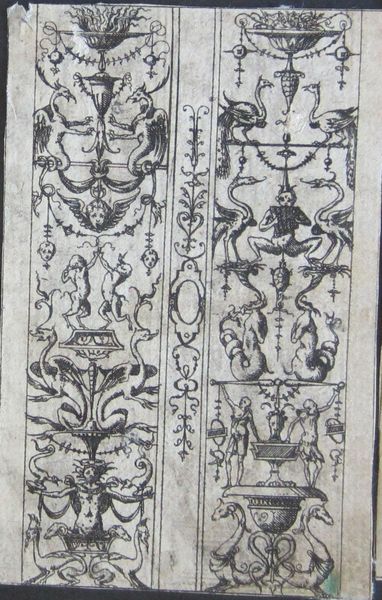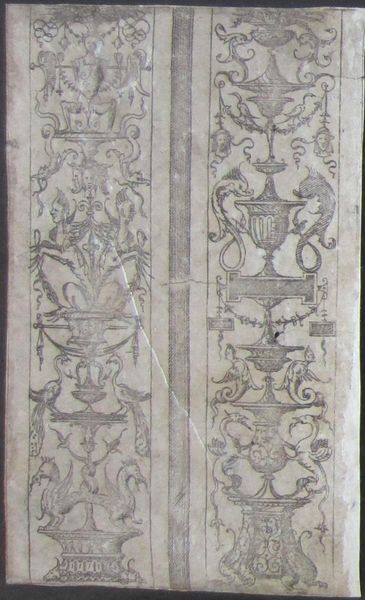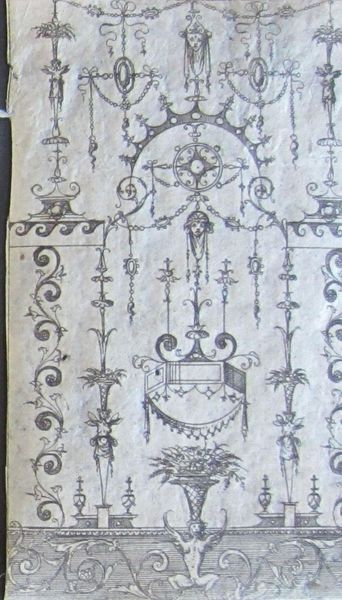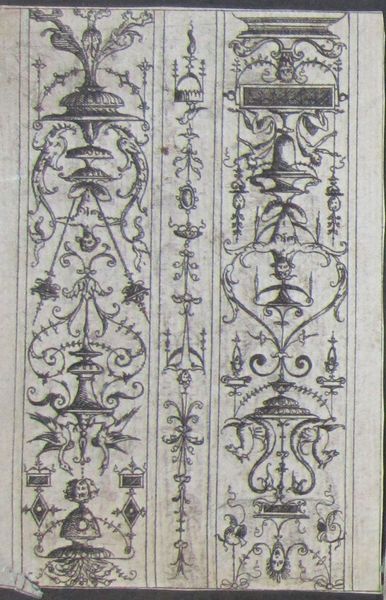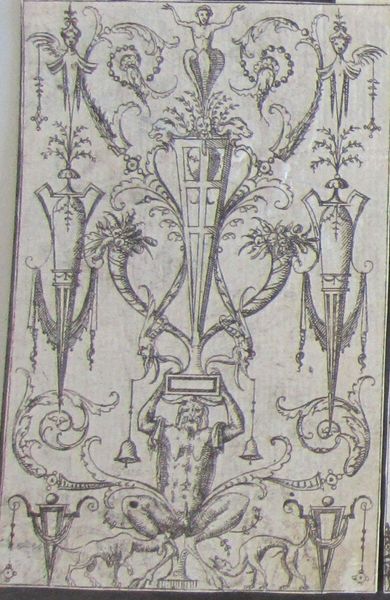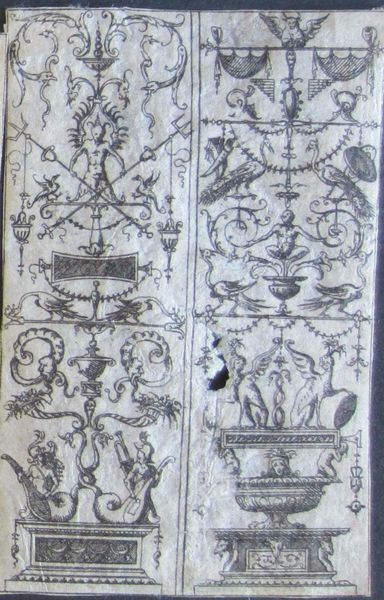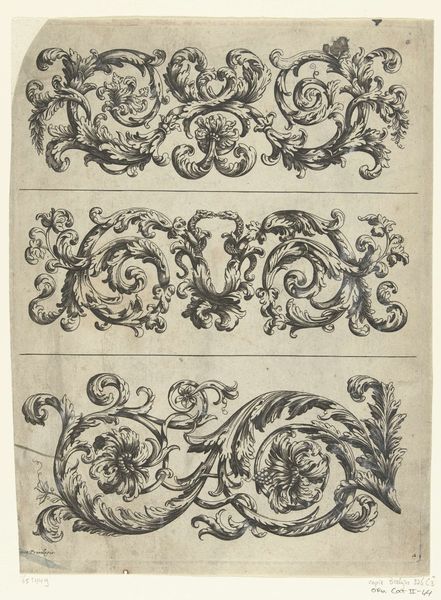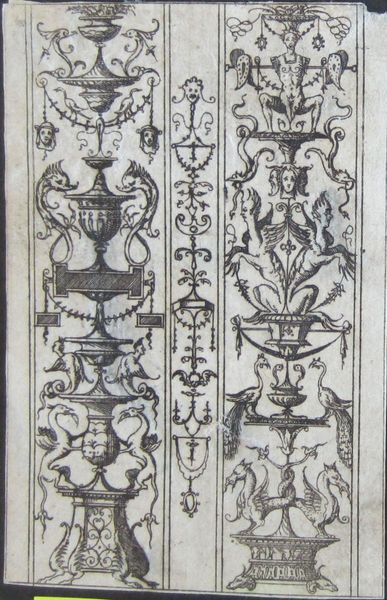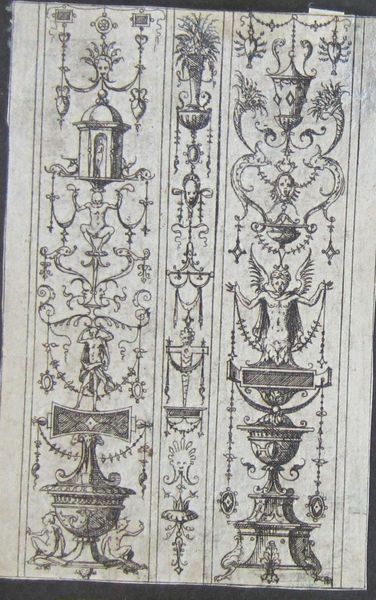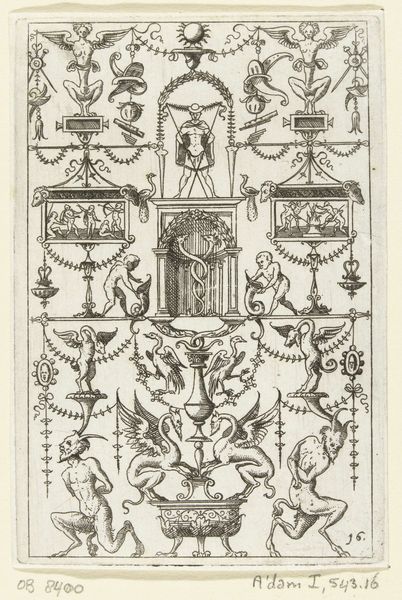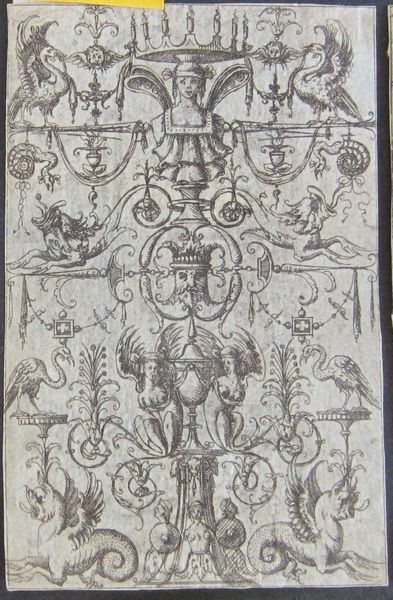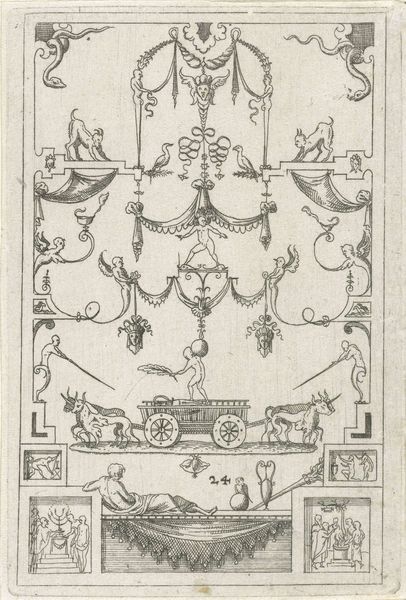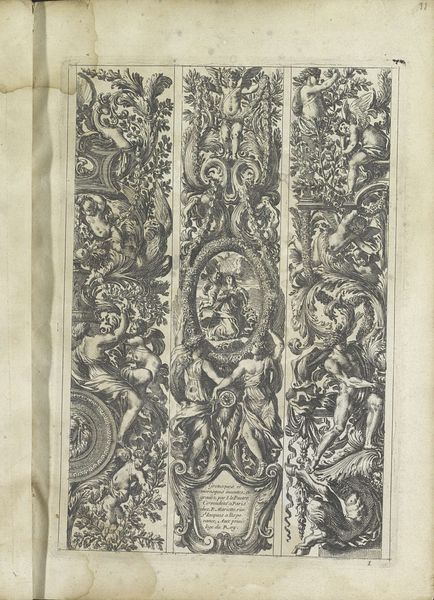
Three Friezes of Grotesques, the Middle One with a Nereid and a Triton Challenging Chimeras 1550
0:00
0:00
Dimensions: sheet: 10.5 x 6.9 cm (4 1/8 x 2 11/16 in.)
Copyright: CC0 1.0
Editor: This is Jacques Androuet Du Cerceau's "Three Friezes of Grotesques," and it’s at the Harvard Art Museums. I am fascinated by the chimeras and strange mythological creatures. How would you interpret the symbolism in this work, especially considering its historical context? Curator: These friezes, teeming with hybrid creatures, reflect the Renaissance fascination with classical antiquity, but through a distorted lens. The grotesque, as a style, was subversive, challenging notions of beauty and order. Think about the power dynamics at play. Who gets to define beauty, and who is relegated to the monstrous fringe? Editor: So, the artist might be using these creatures to question societal norms? Curator: Precisely! These aren’t just decorative elements. They're a visual disruption, a challenge to the established hierarchy. Du Cerceau uses them to hint at the fluidity of identity and the instability of power structures. They reveal hidden anxieties and unspoken desires. What do you make of the nereid and triton? Editor: I see them almost as figures of resistance within that established order. I hadn’t considered how provocative the grotesque could be! Curator: Exactly, art often reveals these hidden tensions. I will not look at Renaissance ornamentation the same way again.
Comments
No comments
Be the first to comment and join the conversation on the ultimate creative platform.

